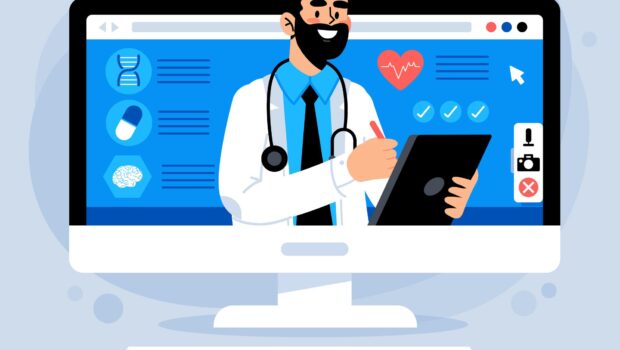How Telehealth is Changing Healthcare Across the Globe
Can you imagine a world without the internet? It’s hard to envision.
While some aspects of an increasingly digitized lifestyle can be seen negatively, there’s a lot to be said for the benefits. Telehealth, for instance, has taken the world by storm and continues to increase in popularity—and for a good reason.
According to McKinsey & Company, the use of telehealth services has stabilized at levels of 38 times higher than pre-Covid times.
What does this mean in terms of the consumers? The massive and stabilized increase in telehealth indicates that they want accessible healthcare, and the market is happy to provide it.
What is telehealth?
Telehealth uses digital technologies, like tablets, smartphones, and computers, so patients can easily access healthcare services remotely.
To better understand this fascinating topic, here are five ways telehealth has changed healthcare
Access to healthcare has improved
By 2013, the U.S.A. is predicted to reach a shortage of over 120,000 doctors. With the growing shortage of physicians, patients may experience increased appointment wait times. Not to mention, finding a specialist may be tougher.
Telehealth doesn’t necessarily solve the problem of not having enough doctors. However, it does improve efficiency and access because:
- Appointment times are reduced.
- Online doctors can give referrals to specialists.
- Booking a consultation is simple.
- Those in rural areas gain access to doctors.
- Those with mobility issues gain access to doctors.
- 24/7 access.
- More centralized storage of medical documents.
- Prescription fulfillment is done online.
- Prescription delivery (depending on service).
With digital healthcare solutions, such as the Ravkoo Health App, consumers gain access to many important medical services available at their fingertips from mobile devices.
Costs are more affordable
If you’re one of the many who don’t have healthcare coverage, the cost of medical attention can be daunting; However, telehealth has greatly opened up the market.
Now, patients can choose their healthcare provider based on the doctor’s pricing and expertise. Since telehealth continues to expand and the healthcare industry has grown, the prices need to compete.
Also, many online pharmacies offer their registered users discount codes or member rates, reducing the cost of prescriptions.
Doctors, pharmacies, and mental health counselors can all partner with telehealth medicine apps, like Ravkoo Health, to showcase their expertise while offering affordable prices for the consumer.
Access to medical care is faster
If you wake up with an unexpected health concern that needs immediate attention, you don’t necessarily want to sit in a long line at the walk-in clinic.
However, depending on the service you utilize, with telehealth, you’ll often be able to get same- day care (or within a few days). Do your research to see what telehealth provider works best for you regarding appointment wait times.
Telehealth allows patients to get the medical care they need when they need it. Rather than traveling to a hospital and waiting for an appointment, physicians can meet you conveniently through videoconference, audio call, or text.
Privacy is better prioritized
Have you ever felt hesitant to visit your doctor in person? Health concerns can be sensitive topics, and removing the barrier of having to explain your issue to the office staff or a doctor in person goes a long way in helping someone feel comfortable.
In these cases, telehealth brings patients peace of mind by allowing them to consult with doctors from the comfort of their homes.
Another benefit of telehealth is that a patient can securely access their records and health data online rather than having physical documents (such as lab results, prescriptions, and appointment notes) scattered between offices.
Patient compliance is improving
With busy schedules or problems with mobility, traveling back and forth from healthcare facilities can be challenging. However, telemedicine can offer patients convenient appointments and ongoing virtual monitoring.
Doctors can regularly check in with patients through remote-monitoring devices, reading their online medical data (when access has been granted), and teleconferencing.
Remote-monitoring devices can collect a person’s important healthcare information (such as blood pressure, heart rate, and oxygen levels), so a patient and their physician can consistently be aware of progress. Also, if necessary, patients can schedule an in-person visit.
Proactive and early intervention can lead to a more effective healthcare experience for medical providers and patients. Moreover, while telehealth solutions aren’t perfect, they certainly have offered consumers an opportunity to manage their wellness needs better.
Also, companies like Ravkoo Health seek to empower Americans by regularly providing current, informative content. Ultimately, consumers deserve affordable and accessible healthcare, and telehealth services are at the forefront of this growing demand.
Cover Image by Freepik













